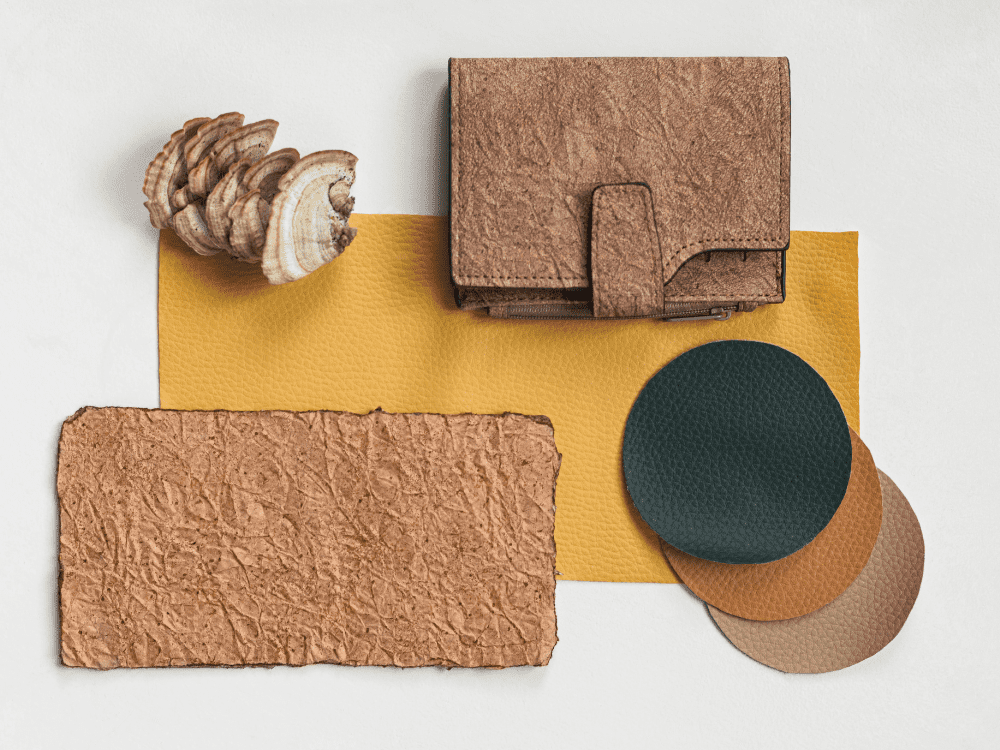
What Is Vegan Leather And Is It Sustainable?
You may be asking “What is vegan leather? It’s not like I eat my clothes!”
When something is vegan, it doesn’t just relate to the food you eat. Veganism is an ethos and a lifestyle that prohibits the use and consumption of animals for entertainment, products, and food.
Vegan leather embodies this philosophy by keeping the cows out of your clutch—but is vegan leather sustainable?
While the ethical credentials of faux leather are pretty obvious (*cough cough*, no animals are killed), its sustainability is not so black and white. Cruelty-free alternatives to leather are better from an animal-welfare perspective, but that doesn’t mean that they aren’t cruel to our planet.
There’s a lot of nuances involved, and it’s one of the more complex fabrics where the sustainability aspect is just as convoluted.
Let’s slide into some vegan sandals as we stroll towards a more holistic understanding of what sustainable faux vegan leather really is.
Sustainable Vegan Leather Properties & Considerations
1. What Is Vegan Leather & What Is Vegan Leather Made Of?
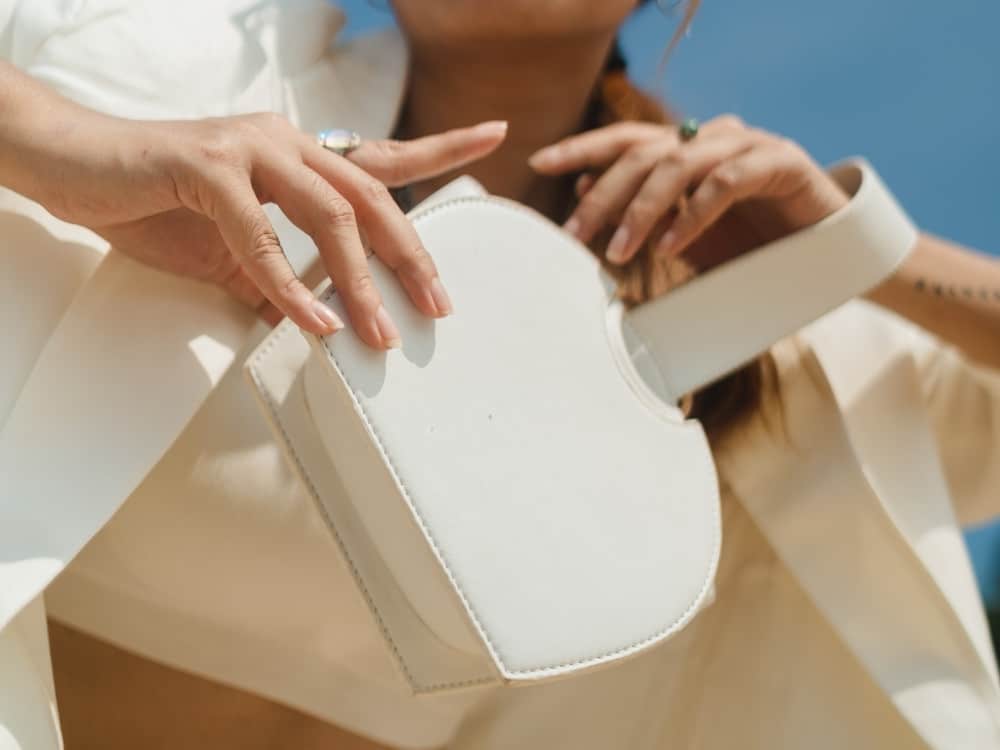
What is faux vegan leather?
Well, it’s (obviously) a vegan fabric, alongside organic cotton and hemp fabric, none of which contain animal byproducts.
That tells us what vegan leather is not made of, so now we need to ask: what is vegan leather made of?
The options are practically endless (as we’ll explain a bit further down) but for now, there are two umbrellas under which vegan leather fabrics fall:
Plastic-Based Vegan Leathers
Unfortunately, the vegan leather that’s currently available in the market is still either blended with plastic or made entirely of plastic.
Let’s start with PU or PVC-based microfiber vegan leather.
Both of these types of plastic are commonly used in faux leather but have nearly the same carbon-intensive footprint as the real stuff.
If you can only avoid one, let it be PVC.
Polyvinyl chloride (PVC) releases toxic chemicals during its production phase and requires plasticizers like endocrine-disrupting phthalates to make them flexible enough to get into those pleather leggings.
According to the WHO and US Center for Disease Control, PVC has been linked to all kinds of health problems, like cancer, developmental disorders, infertility, Type II diabetes, heart and liver disease, CNS, and other respiratory disorders.
On the environmental side, there is NO safe way to dispose of PVC.
Recycling it requires tons of equally bad chemicals–leading to an abysmal 0.25% recycling rate—and trashing it means they’ll all just leach into the Earth for centuries.
PU, or polyurethane, is still associated with a chemical-intensive production process, but it’s slightly better because it can at least be recycled mechanically (through shredding into small bits) rather than chemically.
If you’re sold on a specific vegan handbag that doesn’t come in plant based options, PU (especially when recycled materials are used) is the better choice over PVC.
Still, there are even better substitutes to be had in the form of plant-based leather.
Plant-Based Vegan Leathers
Your best bet is to accessorize with the 3rd P of eco friendly vegan leather: plants.
From fungi to fruit peels, innovative faux leather fabrics use plants and other bio-based materials—though these are sometimes combined with a little plastic for durability and weather resistance.
Still, a little is better than a lot.
2. Vegan Leather Vs Real Leather
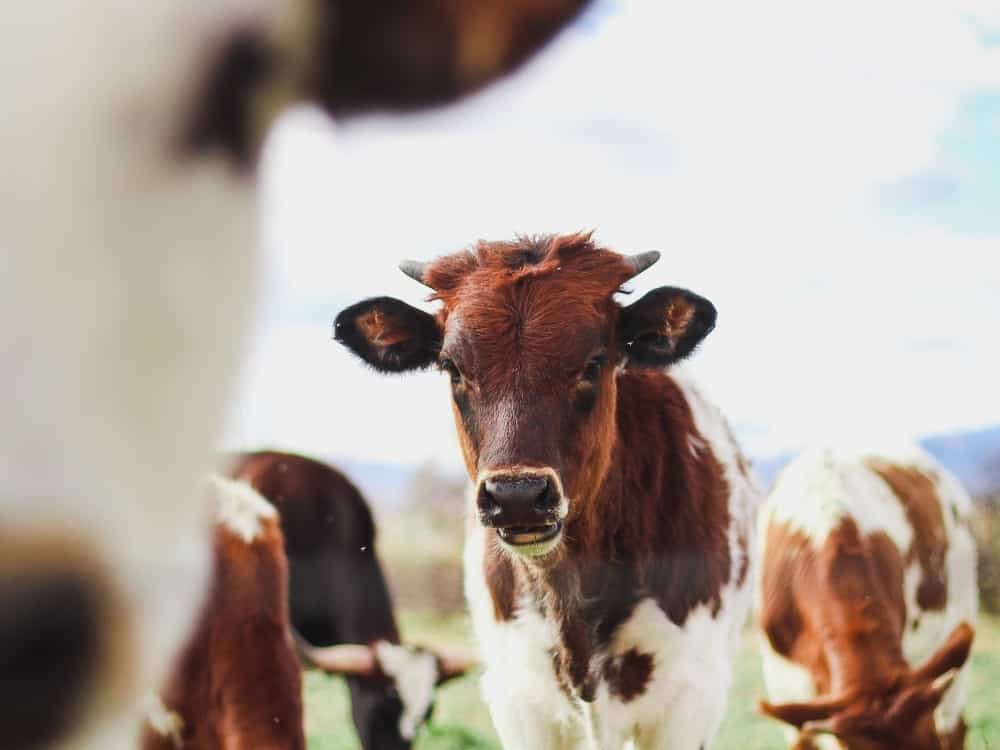
Before we begin judging the merits of vegan leather, let’s first look at the impact of that which it seeks to replace: real leather made from animal skins.
The way we approach the question, “Is vegan leather sustainable?”, is to look at all of the ways regular leather is not.
Leather is one of the oldest and longest used fabrics throughout history, but its impacts are devastating—and not just for the animals getting turned into that luxury handbag.
Animals
Leather means dead animals. There’s no way around it.
Even upcycled leather, the most sustainable form of leather, was still once a living being. Hence the quotations around “ethical” leather“.
You need your skin for survival, and so do the cows, pigs, goats, sheep, crocodiles, and ostriches (to name just a few) that end up being used for the latest fashion trends.
Billions of animals are killed every year for leather fashion accessories and the like, so contrary to common belief, leather is often not a by-product of the meat and dairy industry. Though we can contrast this with the fish leather industry.
Planet
Traditional animal leather may be a natural material, but its cradle-to-grave environmental impact is bleak.
Animal leather is associated with a significant amount of greenhouse gas emissions beginning at the farming level—which is far higher than other animal fabrics like wool and silk.
It contributes to damaged water sources, water scarcity, and has been associated with eutrophication (agricultural runoff that causes nutrient overload in natural bodies of water).
We then have to consider the chemicals required to tan the leather.
There are around 250 different chemicals and heavy metals—primarily chromium, arsenic, and cyanide—-used in traditional leather tanning.
These chemicals have been linked time and time again to increased risks of cancer and other severe health effects.
This natural fiber (which would take hundreds of years to break down even in raw form) is rendered non-biodegradable by the use of chemical treatments.
People
The tanning process doesn’t happen in a bubble; it needs workers, meaning each and every tannery worker is exposed to those harmful chemicals day in and day out.
From the overt health problems (mainly skin and respiratory diseases) to the fact that many of these people work extended hours without a decent living wage or regulated work environment, the leather industry joins other fashion industries (like diamonds) for their slew of ethical issues.
So, is vegan leather more sustainable than real leather?
Yes, but the bar is pretty low, which is why we should instead be asking: how sustainable is vegan leather compared to real leather?
3. Is Vegan Leather Eco Friendly?
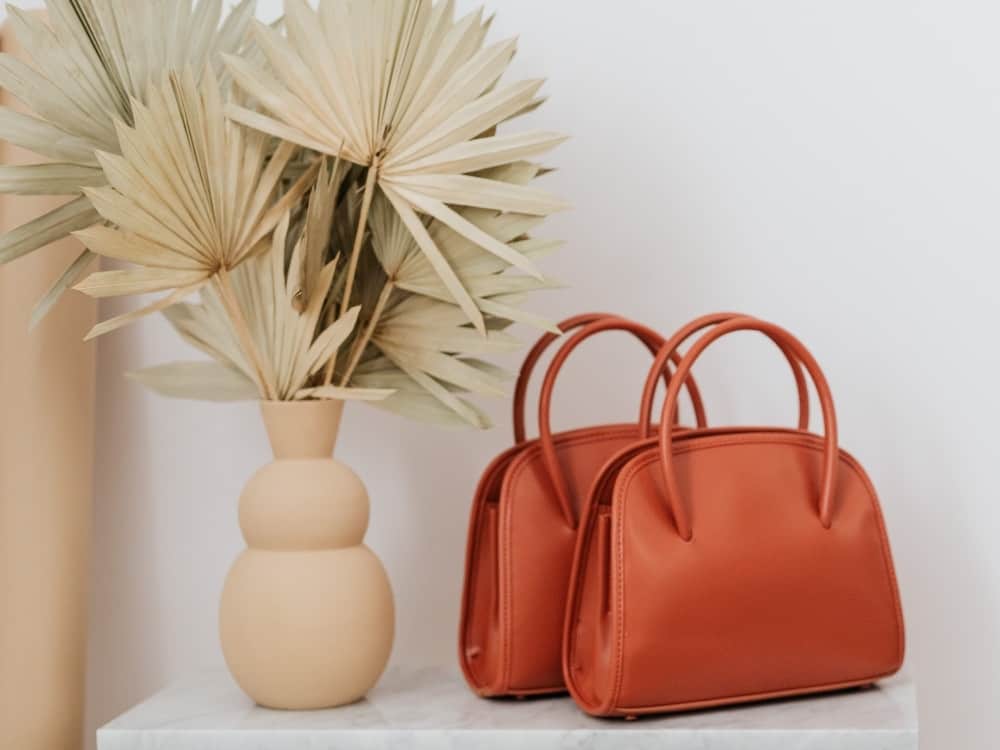
In light of conventional leather standards (or lack thereof), it doesn’t take much for almost any sustainable vegan leather fabric to have a smaller environmental hoofprint than its tanned alternative.
Off the bat, vegan leather means no animals were harmed.
Beyond that, however, the matter of how sustainable is vegan leather is determined by what it’s made of.
How environmentally friendly is vegan leather?
As previously mentioned, two of the most used faux leather alternatives are PVC or PU plastics.
Derived from fossil fuels that, truthfully, gives eco friendly faux vegan leather a bad name because they are certainly not eco friendly.
Due to the near-impossibility of recycling, PVC in particular yields the highest carbon footprint vegan leather alternative.
Because it is still a relatively young, growing industry, there also isn’t much information on supply chains for most vegan leather manufacturing—therefore we often can’t draw conclusions about worker conditions or fair pay.
For that, you’ll need to look at the traceability and information provided by individual brands using these materials.
Still, according to the Higg Materials Sustainability Index, cow leather averages a 10x greater impact than vegan leathers. So on a relative basis, the most we can say is that vegan leather is more eco friendly than traditional leather. But again, that does not mean vegan leather is actually eco-friendly.
How durable is vegan leather?
One of the downsides to vegan leather is that it’s less durable than its counterpart.
If it’s plastic-based, some say it’ll last two to five years on average, though there are reviews that claim longer for items like handbags that see less wear and tear.
Keep in mind that when the vegan leather contains plastic, it’s not biodegradable and will release small plastic particles as it decomposes.
What about when it’s raining? Is vegan leather waterproof?
The positive side to using plastic is that, in most cases, it makes it waterproof, which is why it’s found in even sustainable rain jackets (though cork leather is waterproof sans plastic).
Some plant-based vegan leather alternatives will have similar life spans (two to five years) but owe their longevity to a plastic coating that keeps them looking good for longer. Without any plastic, you can expect less durability and a shorter life span.
Unfortunately, there’s a tradeoff between plastic-free and durability. Which is a good illustration in this ‘ecospace’, broadly speaking, of how there’s no one size fits all. But rather a matter of what aligns with your personal values.
If ethics, durability, and sustainability are of equal importance to you, an upcycled or recycled leather product might be the best bet .
Before you make the call, let’s moo-ve away from cows and plastics to the best sustainable vegan leathers.
4. Vegan Leather Fabrics
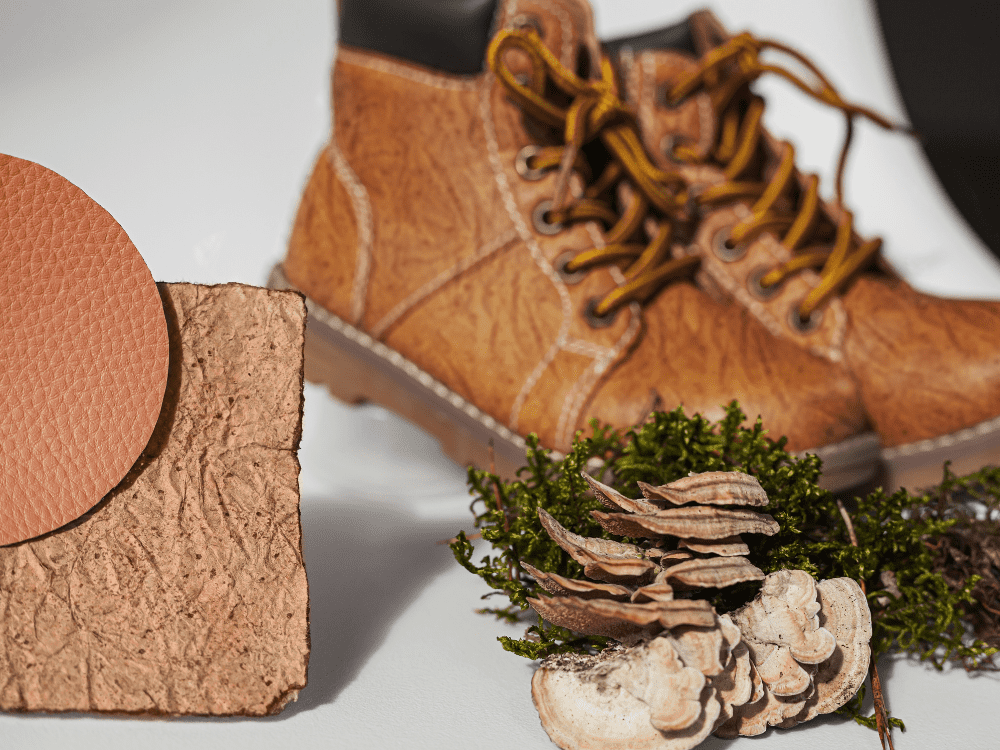
Pleather is so last season and if you want to know what’s the most eco friendly vegan leather, it’s time to grow your plant knowledge.
They make for the lowest impact vegan leathers—and there’s no shortage of options.
Piñatex:
Piñatex is just one type of sustainable vegan leather that’s revolutionizing the fashion industry, particularly among vegan shoe brands.
It’s made from pineapple leaves, a normally-wasted byproduct that typically gets burned by the fruit industry.
The pineapple fibers have surprising strength and flexibility, and as Piñatex is made from waste, its production requires no additional agricultural inputs or water.
Plus, it provides an additional income stream for the communities involved in pineapple farming.
Unfortunately, it is coated with a petroleum-based material for greater durability, making it non-biodegradable, but they are working to develop a biodegradable resin alternative.
Frutmat:
Frutmat, otherwise known as apple leather or Pellemela (in Italy where it’s produced), is similar to Piñatex, but it is made using wasted scraps such as peels and cores from the apple juice industry.
Mirum:
Mirum is a high-performance material made from 100% natural inputs and 0% plastic.
It takes things like coconut and vegetable oil waste and combines it with cork and hemp waste to make a leather-like product.
Cork:
Cork fabric comes from Cork Oak trees, which grow in the Mediterranean (specifically Portugal) via sustainable forestry methods.
When cork is harvested through a process of shaving away the bark, it doesn’t harm the tree. Instead, it helps encourage a process of regeneration, which lengthens the tree’s lifespan.
On average, each hectare of Cork Oak forest sequesters 14.7 tons of CO2—making cork perhaps the lowest carbon footprint vegan leather.
The production process is just as green—the cork is simply boiled in water to gain some pliability before being flattened into sheets.
Sometimes, sustainable dyes are added, but otherwise, the process is complete, making it one of the most sustainable vegan leathers.
Rubber:
Recycled rubber leather is another trending fabric, particularly for ethical sandals and recycled flip flops.
The density and texture end up being very similar to regular rubber, and materials that would typically find their way to a landfill can be used to create bags and accessories.
Since there’s so much surplus leather laying around (hello, TIRES!), there’s pretty much no end to the supply.
Being waterproof and designed for high wear-and-tear, it’s also one of the most durable vegan leathers.
MuSkin:
MuSkin is made out of the caps of the Phellinus ellipsoideus mushroom. The fungus is one that attacks trees in the subtopics, so harvesting it helps eliminate invasiveness.
This eco friendly faux vegan leather feels like suede, absorbs moisture, limits bacteria proliferation, and is biodegradable.
You could say there’s so mush-room for growth with this sustainable vegan leather fabric.
Malai:
Malai is the India-based startup that has turned leftover coconut water (agricultural waste) into vegan leather.
Once it reaches the end of its life cycle, it is compostable, making it among the lowest impact vegan leather alternatives out there.
Washi:
Washi is a Japanese paper traditionally used in arts and crafts, but innovative designers have ventured to make sustainable vegan leather out of it.
SCOBY:
SCOBY is short for Symbiotic Culture of Bacteria and Yeast.
If you’re a kombucha flavoring enthusiast, you’ll recognize it as the live culture used to make the fermented tea beverage.
SCOBY is basically just a mushy blob of bacteria, and if it’s dried flat, it becomes a leather-like material.
To make SCOBY leather water resistant, beeswax is sometimes used on the top layer, so keep this in mind as this version is not 100% vegan.
Cactus:
This new-to-the-scene, eco-friendly cactus leather is derived from leaves of nopal cactus which grows abundantly in Mexico and needs virtually no water to thrive.
It is one of the most durable vegan leathers, lasting nearly 10 years.
Desserto makes its products with recycled polyester and cotton, so this means it is only semi-biodegradable, but we hope to see creative minds utilizing more sustainable materials in the future.
Sustainable Faux Vegan Leathers of the Future
If you think those natural vegan leathers sound futuristic, that’s just the tip of the tannery.
While these experimental vegan leathers aren’t ready to roll out on a full-scale production level quite yet, we could eventually see a completely animal-free culture.
Modern Meadow’s Zoa material is bio-engineered to look, feel, and stretch exactly like leather. It could be a few years until we see this on shelves, but get excited because it’s no doubt a game changer.
Green fashion entrepreneur Alice Genberg has developed a vegan leather made from used coffee grounds. We’ve seen something similar before with S.Cafe, a yarn spun from recycled coffee grounds, so a leather-like version isn’t too hard to imagine.
Similarly, Tômtex is a leather alternative made from combining wasted seafood shells and coffee grounds.
Mylo, by Bolt Threads Technology, is a low impact vegan leather that’s grown from mycelium (the root structure of mushrooms).
Its production has less environmental impact and doesn’t use solvents like dimethylformamide (DMF), which is found in other types of synthetic leather.
5. What Is The Most Sustainable Vegan Leather?
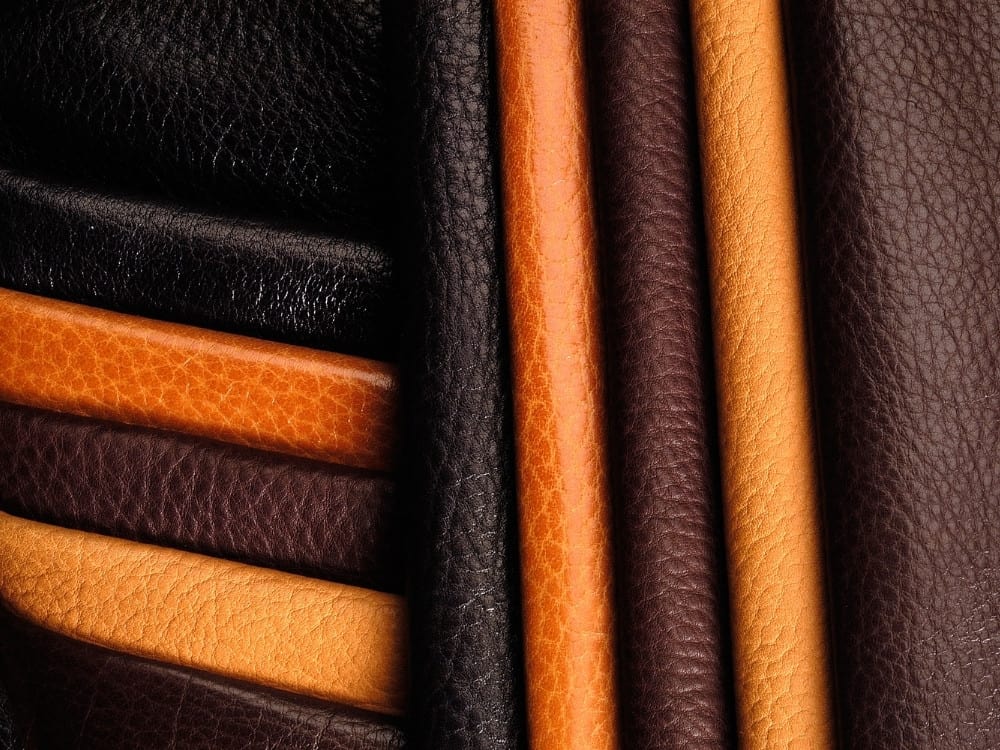
As you can see, vegan leather is made from nearly anything and everything, from plants to paper to popular probiotic beverages—but what’s the most sustainable vegan leather?
As we’ve already established, plant-based leathers are superior to plastic-based ones, but beyond that the most eco friendly vegan leather is that which:
1. Already exists.
Those made from recycled materials or industry byproducts get extra sustainability points.
2. Lasts for years to come.
As with all sustainable fabrics, the final answer to the question, “How eco friendly is vegan leather?” largely depends on you, the consumer.
Keeping things around and in circulation is arguably the most critical consideration in sustainability, so if you buy a pair of vegan leather shoes that aren’t waterproof, maybe don’t wear them on a day when rain is forecast.
Take care of your vegan leather products through proper cleaning and storage to ensure the materials last as long as possible—before eventually being responsibly laid to rest in your indoor compost bin.
Did you know we Have a Newsletter?
We cover the latest in sustainable living, fashion, zero waste, beauty, travel, finance and more…
Final Thoughts On How Sustainable Is Vegan Leather
So, is vegan leather ethical?
Absolutely.
Is vegan leather environmentally friendly?
It depends.
As with many trending ec fabrics, like modal and bamboo, the sustainability of vegan leather exists on a spectrum that leaves a lot of room for greenwashing.
Vegan leather certainly isn’t perfect, but there is no reason to use animals for fashion—and the rapid innovation and improvement of the sustainability of newer vegan leather technology just makes it more of a no brainer.
So as you think of creating an ethical and environmentally aware wardrobe or muse with friends while cooking up some mushrooms, spread the word on mushroom (and all other) vegan leather.
Have a fashion bestie who may need to level up on their ethical fabric education? Share this article with them so they too can wear a cruelty-free wardrobe.
Pin these:
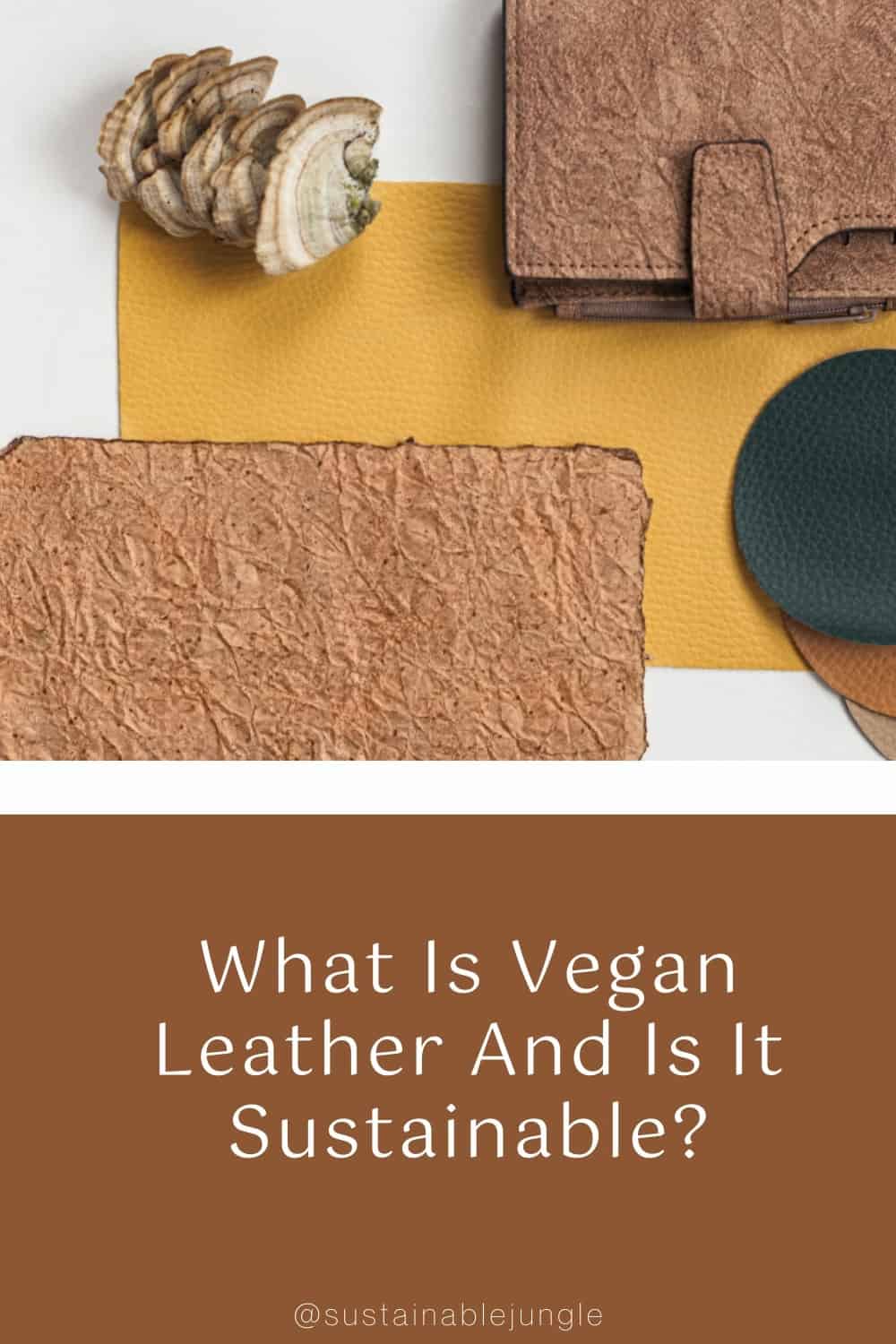
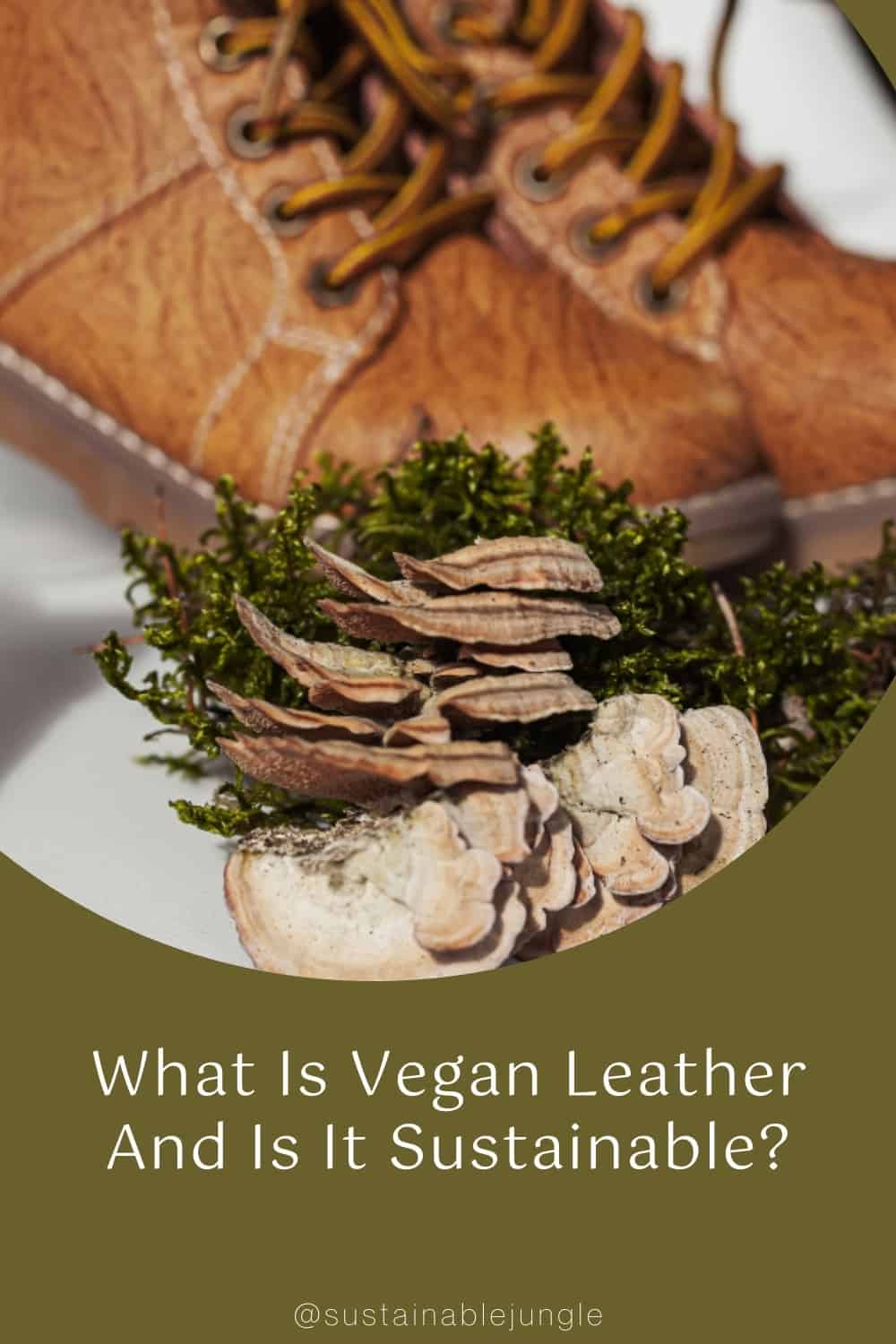

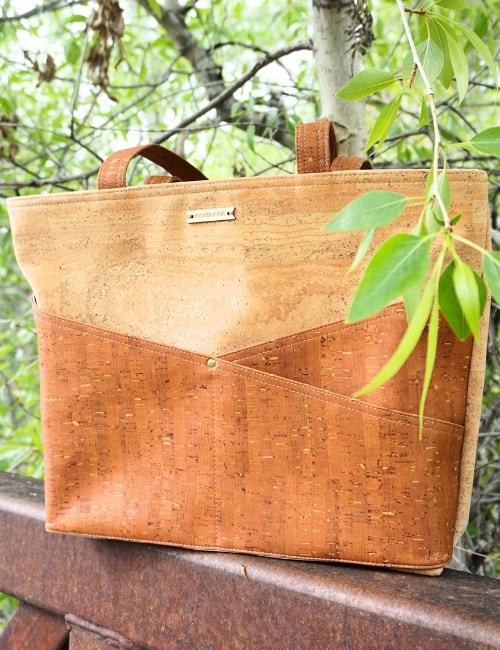
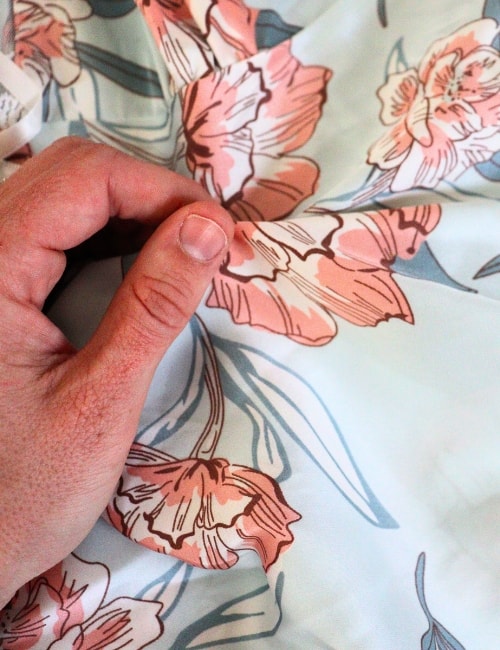

People have been killing and eating animals for as long as people existed. So do other animals, there is nothing wrong with that. However, we have the possibility to do this in a ‘friendly’ way and we should do so.
There is one more leather alternative to add to the list: Leap. Leap is based on apple waste and produced in Denmark. Check it out: https://www.explore-leap.com/
I feel like you didn’t gave leather a fair evaluation. No, it’s not biodegradable, but leather goods last a really long time. There are environmentally cleaner ways to raise and process leather. I am very excited about new alternatives, but I’m guessing that vegetable tanned, ethically produced leather would beat PVC or PU. To me, they would be a more fair comparison. I’m also gobsmacked that a PVC or PU handbag for instance costs as much if not more than a leather one.
The trouble I’m having is finding out where I can buy these new fabrics.
I’ve seen the piñatex website for example, but practically everything is sold out (despite it containing 10% polyurethane binder/matrix) with a shipping price to Australia of some 98 Euros!! (which is twice as dear as the actual fabric). It’s not economical to buy one or two metres of fabric like that…